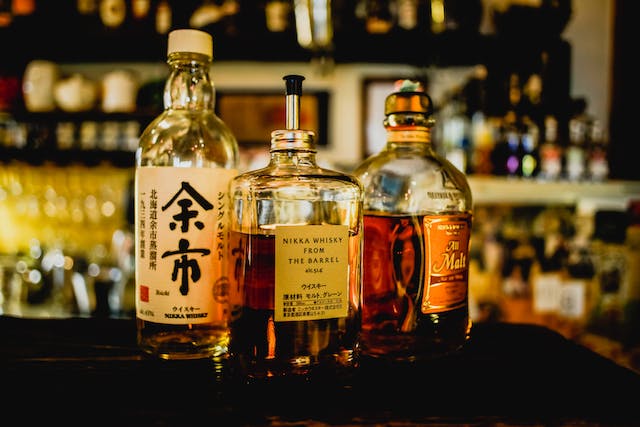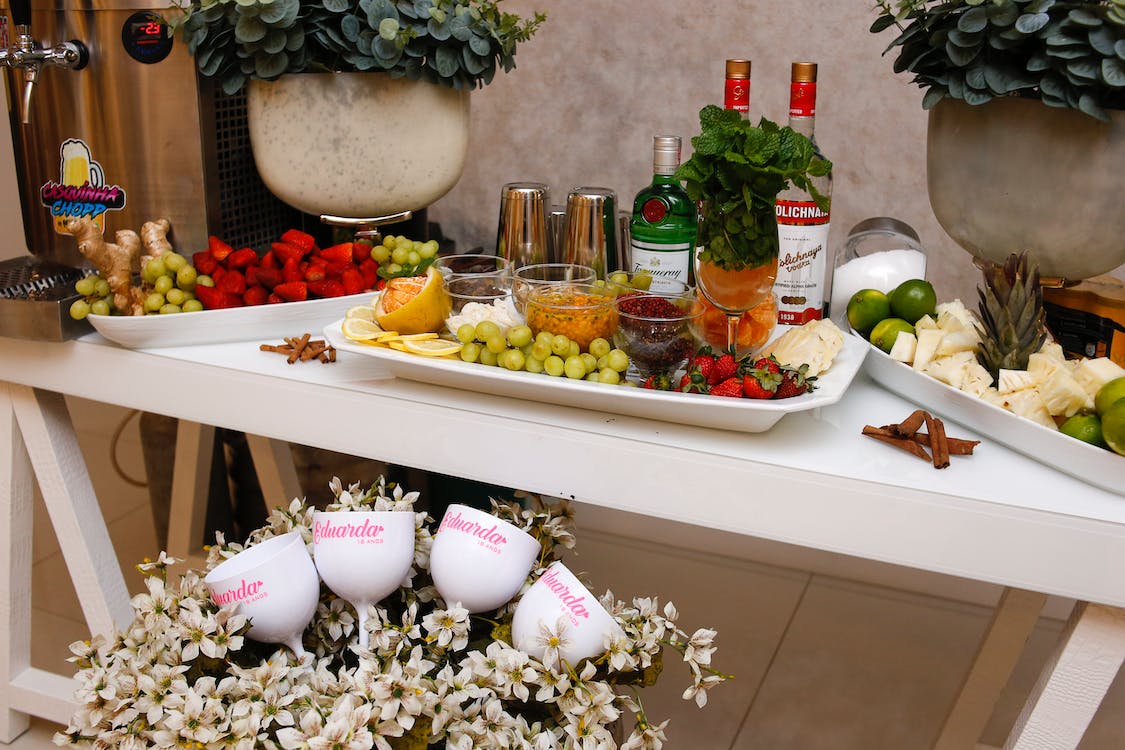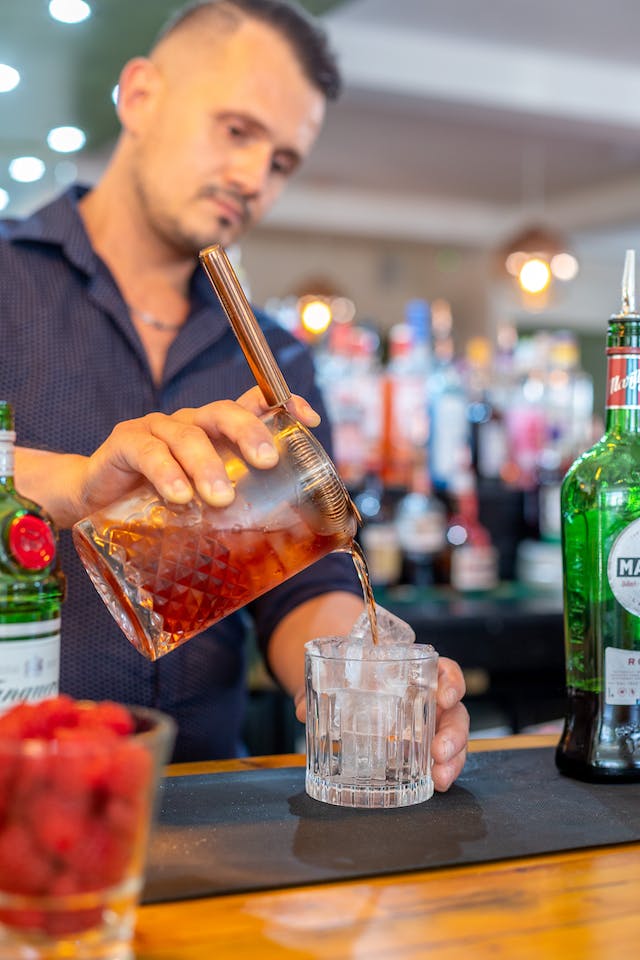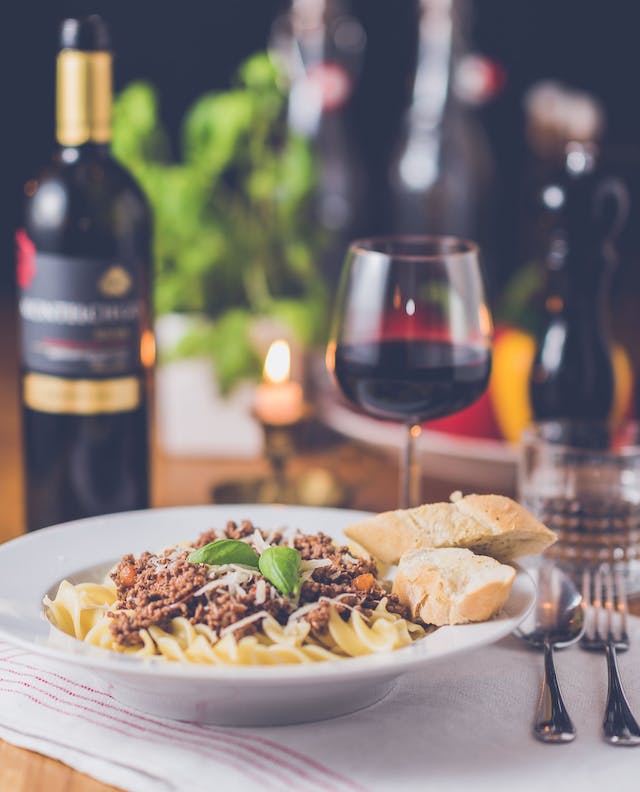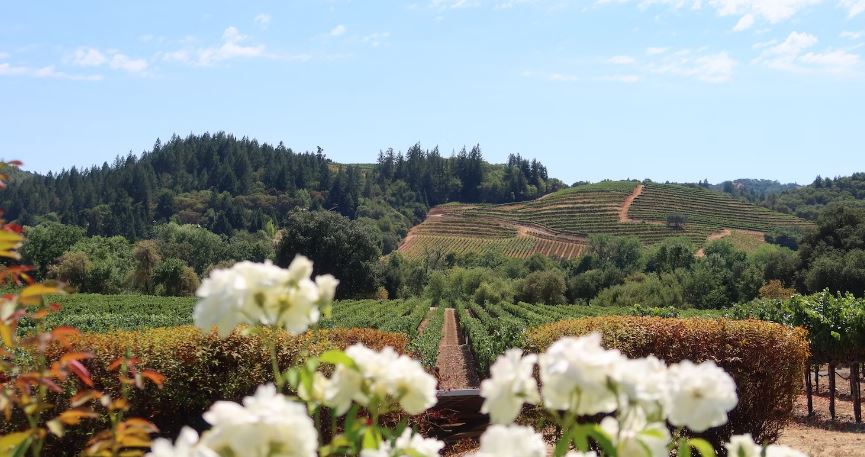Introduction
Welcome to the exciting world of Zinfandel wines, where every sip tells a story of bold flavors, rich history, and a journey that spans continents.
Like a well-crafted symphony, Zinfandel wines harmonize the Old-World charm of their Croatian roots with the vibrant, sun-kissed personality of California. In this guide, you will uncork the secrets of Zinfandel, exploring its diverse styles, tantalizing flavors, and the art of pairing it with culinary delights. So, whether you’re a seasoned oenophile or just dipping your toes into the world of wine, join this journey and raise a glass to the captivating world of Zinfandel.
Zinfandel is a popular and versatile red wine grape variety that is known for its bold flavors and diverse styles. It’s primarily associated with California, but it has roots in Croatia and has spread to other wine regions around the world.
Here’s a guide to Zinfandel wines:
History and Background
The history and background of Zinfandel wines are as complex and intriguing as the wine itself. Zinfandel is a grape variety that has made its home in California but has its roots traced back to Croatia. Here’s a closer look at the fascinating history of Zinfandel:
Croatian Origins
- Zinfandel’s story begins in the Dalmatian coast of Croatia, where it is known as “Crljenak Kaštelanski” or “Tribidrag.”
- Historical records indicate that this grape has been cultivated in Croatia for centuries, possibly dating back to the Roman times.
- In the 19th century, Croatian immigrants brought vine cuttings to the United States, particularly California, where the grape’s journey took a dramatic turn.
Arrival in California
- Zinfandel vines made their way to California during the mid-19th century, most notably during the Gold Rush era in the 1850s.
- The grape quickly adapted to the California climate and soil conditions, thriving in the state’s diverse terroirs.
- It gained popularity among early California winemakers and became one of the most widely planted grape varieties in the state.
Rise in Popularity
- By the late 19th century, Zinfandel was already well-established in California and was being made into wine under various names, including “Black St. Peters” and “Zin.”
- Zinfandel’s ability to produce high yields and its adaptability to different winemaking styles contributed to its popularity.
Mystery and Clonal Evolution
- For many years, the exact origin of Zinfandel was a mystery, with speculation about its European ancestry.
- In the 1990s, DNA testing confirmed that Zinfandel was genetically identical to the Croatian grape variety Crljenak Kaštelanski and the Italian Primitivo.
- This discovery shed light on the grape’s European origins and its journey to California.
Modern Zinfandel Production
- Today, Zinfandel is primarily associated with California, and it’s known for its diverse range of styles, from light and fruity to robust and full-bodied.
- California’s various wine regions, including Napa Valley, Sonoma County, Paso Robles, and Amador County, have become famous for producing exceptional Zinfandel wines.
Diversity of Styles
- Winemakers can craft Zinfandel wines with a wide range of characteristics, influenced by factors such as vine age, terroir, and winemaking techniques.
- Old Vine Zinfandel, made from mature vines, is highly regarded for its depth and complexity.
White Zinfandel
- In the mid-20th century, a winemaker accidentally created “White Zinfandel” by removing the grape skins early in the winemaking process, resulting in a pink-hued, sweeter wine.
- White Zinfandel became a popular style, especially in the United States, and introduced many people to the world of wine.
Zinfandel’s journey from Croatia to California, its transformation into various wine styles, and its enigmatic history make it a truly captivating grape variety. Whether you’re sipping a robust Zinfandel from an old vine or enjoying a chilled glass of White Zinfandel, you’re tasting a piece of history and a grape with a remarkable story.
Flavor Profile
Zinfandel wines are celebrated for their bold and distinctive flavor profile. However, it’s important to note that the flavor characteristics of Zinfandel can vary widely depending on factors such as the grape’s ripeness, the winemaking process, and the region in which it’s grown. Here’s a general overview of the flavor profile you can expect from Zinfandel wines:
Fruit-forward
Zinfandel is known for its prominent fruit flavors, which can include:
- Blackberries. Ripe blackberry notes are a hallmark of Zinfandel wines, offering a sweet and juicy quality.
- Raspberries. Red fruit flavors, such as raspberries, often contribute a bright and slightly tart element.
- Black Cherries. Dark, luscious black cherry notes are common, adding depth and richness to the wine.
- Plum. Plum flavors can provide a jammy sweetness and a hint of earthiness.
Spice and Pepper
Many Zinfandel wines exhibit spicy and peppery notes, often reminiscent of black or white pepper. This spicy character can vary in intensity, with some Zinfandels displaying a subtle peppery finish and others offering a more pronounced spiciness.
Oak Influence
Zinfandel wines are frequently aged in oak barrels, which can impart additional flavor elements, such as:
- Vanilla. Oak aging can contribute vanilla and baking spice notes, which complement the fruitiness of the wine.
- Cedar. Some Zinfandels may exhibit cedar or woody undertones from the oak barrels.
- Smoke. Oak can also introduce smoky nuances, adding complexity to the wine.
Alcohol and Body
Zinfandel wines tend to have higher alcohol content, which can contribute to a fuller-bodied and warming sensation. This elevated alcohol level can enhance the perception of sweetness and richness in the wine.
Tannins
The tannin levels in Zinfandel can vary. Lighter styles may have softer, more approachable tannins, while fuller-bodied Zinfandels may have firmer and more structured tannins that provide a good backbone to the wine.
Acidity
Zinfandel wines typically have moderate to high acidity, which helps balance the richness of the fruit flavors and contributes to the wine’s overall freshness and vibrancy.
Sweetness Levels
Zinfandel wines can range from dry to slightly sweet. Traditional red Zinfandel is typically dry, while White Zinfandel, a popular offshoot, is a sweeter, pink-hued wine.
It’s important to note that Zinfandel’s flavor profile can be quite versatile, and individual bottles may exhibit unique characteristics based on factors such as vineyard location, vine age, and winemaking techniques. As a result, exploring different Zinfandel wines can be a rewarding experience, allowing you to discover a wide range of flavors within this grape variety.
Styles of Zinfandel
Zinfandel wines come in a variety of styles, ranging from light and fruity to rich and robust. The style of a Zinfandel is influenced by factors such as grape ripeness, winemaking techniques, and aging. Here are some common styles of Zinfandel wine:
1. Light and Fruity Zinfandel
Description: Light-bodied Zinfandel wines are known for their bright, fruit-forward flavors and lower alcohol content.
Flavor Profile: These wines often showcase red fruit flavors like raspberries, cherries, and cranberries, along with subtle hints of spice and pepper.
Food Pairing: Light Zinfandels pair well with lighter dishes such as grilled chicken, turkey, pork, and pasta with tomato-based sauces.
2. Classic Zinfandel
Description: Classic Zinfandel wines strike a balance between fruitiness and body, offering a versatile and approachable style.
Flavor Profile: Expect a combination of ripe blackberry and cherry flavors, with moderate levels of spice and pepper. These wines often have a smooth, medium body.
Food Pairing: Classic Zinfandels go well with a wide range of dishes, including barbecue, burgers, pizza, and grilled sausages.
3. Old Vine Zinfandel
Description: Old Vine Zinfandel is made from grapes harvested from mature vines, typically 50 years or older. These vines produce lower yields but more concentrated flavors.
Flavor Profile: These wines exhibit intense blackberry and black cherry flavors, often with notes of dark chocolate, tobacco, and baking spices. They tend to be full-bodied and complex.
Food Pairing: Old Vine Zinfandels are a great match for hearty, meaty dishes such as braised short ribs, lamb, and game meats.
4. Zinfandel Blends
Description: Some winemakers create Zinfandel blends by combining Zinfandel with other grape varieties like Petite Sirah or Syrah. These blends can add depth and complexity to the wine.
Flavor Profile: Blended Zinfandels can exhibit a wide range of flavors, with Zinfandel’s fruitiness complemented by the characteristics of the other grapes in the blend. –
Food Pairing: The ideal food pairing for Zinfandel blends depends on the specific grape varieties used in the blend but can include grilled meats, stews, and aged cheeses.
5. Late Harvest Zinfandel
Description: Late harvest Zinfandel wines are made from grapes left on the vine longer to achieve higher sugar levels. They are typically sweet or dessert wines.
Flavor Profile: These wines are rich and sweet, with flavors of dried fruits, figs, raisins, and sometimes a touch of spice.
Food Pairing: Late harvest Zinfandel is best enjoyed on its own as a dessert wine or paired with sweet desserts like chocolate truffles or fruit tarts.
6. White Zinfandel
Description: White Zinfandel is a blush or rosé wine made from the same grape. It is typically sweet and easy-drinking.
Flavor Profile: White Zinfandel offers flavors of strawberries, watermelon, and red berries, often with a slightly floral note.
Food Pairing: White Zinfandel is often enjoyed as a refreshing, slightly sweet wine on its own or with light appetizers.
When exploring Zinfandel wines, consider the style that best suits your taste preferences and the occasion. Whether you’re looking for a casual sipper or a wine to accompany a special meal, there’s a Zinfandel style to fit the bill.
Food Pairings
Wines from the zinfandel grape are renowned for being adaptable when it comes to meal pairings. Their rich fruitiness, balanced acidity, and sometimes spicy or peppery notes make them a great choice for a wide range of dishes. Here are some food pairing suggestions for Zinfandel wines:
Grilled Meats
Zinfandel’s bold flavors and acidity make it an excellent match for grilled meats like steak, burgers, pork chops, and sausages. The wine’s fruitiness can complement the charred flavors from the grill.
Barbecue
Zinfandel’s robust and slightly spicy character pairs wonderfully with barbecue dishes, including ribs, pulled pork, brisket, and barbecue chicken. The wine’s fruitiness can balance the smoky and spicy barbecue sauces.
Pizza
Whether you’re enjoying a classic Margherita pizza or one with toppings like pepperoni, sausage, or mushrooms, Zinfandel’s acidity and fruitiness make it a tasty choice.
Tomato-Based Pasta Dishes
Zinfandel’s bright acidity pairs well with pasta dishes that feature tomato-based sauces, such as spaghetti with meatballs, lasagna, or penne alla vodka.
Mexican and Tex-Mex Cuisine
Zinfandel complements the bold and spicy flavors of Mexican and Tex-Mex dishes. Try it with tacos, enchiladas, fajitas, or chili.
Asian Cuisine
Zinfandel’s versatility extends to Asian dishes, particularly those with sweet and spicy flavors. Consider pairing it with Chinese sweet and sour dishes, Thai curries, or Korean barbecue.
Cheese
Zinfandel pairs well with a variety of cheeses, including aged cheddar, gouda, blue cheese, and even creamy brie. The wine’s fruitiness can balance the richness of the cheese.
Mediterranean Cuisine
Zinfandel can complement Mediterranean dishes such as lamb kebabs, moussaka, or grilled eggplant with tahini. Its acidity can cut through the richness of these dishes.
Spicy Foods
Zinfandel’s peppery and spicy notes can make it an ideal partner for spicy cuisines like Cajun, Creole, or Indian. It can help tame the heat while enhancing the flavors.
Smoked Meats
Zinfandel’s smoky and spicy qualities can pair nicely with smoked meats, such as smoked turkey, ham, or smoked salmon.
Thanksgiving Dinner
Zinfandel is a popular choice for Thanksgiving dinner because it complements the diverse flavors on the table, from roast turkey to cranberry sauce and stuffing.
Desserts
Late harvest Zinfandel, with its sweet and fruity profile, pairs well with desserts like chocolate truffles, fruit tarts, and berry-based desserts.
Remember that Zinfandel wines can vary in style, from light and fruity to full-bodied and bold. The choice of Zinfandel style should complement the specific flavors and intensity of the dishes you’re pairing it with. It’s always a good idea to experiment and discover your own favorite Zinfandel and food pairings.
Aging Potential
The aging potential of Zinfandel wines can vary widely depending on several factors, including the specific style of Zinfandel, winemaking techniques, vineyard practices, and the grape’s ripeness at harvest. Here’s a general overview of the aging potential of different styles of Zinfandel:
Lighter and Fruity Zinfandel
Lighter Zinfandels are typically meant to be consumed relatively young, within 2-5 years of their vintage.
These wines are appreciated for their fresh and vibrant fruit flavors, and they may not benefit from extended aging.
Classic Zinfandel
Classic Zinfandel wines, which strike a balance between fruitiness and body, can often be enjoyed in their youth but may also have the potential to age gracefully.
Many classic Zinfandels can be aged for 5-10 years, during which time they may develop additional complexity and secondary flavors while retaining their fruit character.
Old Vine Zinfandel
Old Vine Zinfandels, made from grapes harvested from mature vines, are known for their concentration and depth of flavor.
High-quality Old Vine Zinfandels can have significant aging potential, often improving and evolving for 10-15 years or more.
These wines may develop additional layers of complexity, including notes of dried fruit, tobacco, and spice, as they age.
Zinfandel Blends
The aging potential of Zinfandel blends can vary widely based on the other grape varieties included in the blend.
Blends with grapes that have good aging potential, such as Petite Sirah or Syrah, may be capable of aging for 5-10 years or longer.
Late Harvest Zinfandel
Late harvest Zinfandel wines are typically sweet dessert wines and are not typically aged for extended periods. They are typically enjoyed relatively young for their rich, sweet flavors.
When considering the aging potential of a specific bottle of Zinfandel, it’s essential to pay attention to several factors:
- Producer
Some wineries have a reputation for producing Zinfandels that age exceptionally well due to their vineyard practices and winemaking techniques.
- Vine Age
Older vines tend to produce grapes with more concentrated flavors, which can contribute to better aging potential.
- Vintage
The quality of the vintage can significantly impact how a Zinfandel ages.
Exceptional vintages often produce wines with greater aging potential.
- Storage Conditions
Proper storage in a cool, dark, and humid environment is essential for wines to age well. If a Zinfandel has not been stored correctly, it may not reach its full aging potential.
While some Zinfandel wines are best enjoyed in their youth for their fruity freshness, others, particularly high-quality Old Vine Zinfandels, can age gracefully and develop additional complexity over time. If you’re interested in aging Zinfandel wines, it’s a good idea to research the specific producer, vintage, and vineyard practices to make an informed decision about the wine’s aging potential.
California Regions
California is renowned for its production of Zinfandel wines, and various regions within the state have developed unique styles and characteristics associated with this grape variety. Here’s a look at some of the prominent California regions known for their Zinfandel production:
Napa Valley
Style: Napa Valley Zinfandels are often characterized by their elegance, complexity, and balance. They tend to be full-bodied with a rich fruit profile.
Notable Subregions: Howell Mountain and Rutherford are known for producing outstanding Zinfandel wines.
Producers: Turley Wine Cellars, Robert Biale Vineyards, and Hendry Ranch are some renowned Napa Valley Zinfandel producers.
Sonoma County
Style: Sonoma County produces a wide range of Zinfandel styles, from fruity and approachable to bold and structured. Dry Creek Valley and Russian River Valley are particularly famous for their Zinfandels.
Notable Subregions: Dry Creek Valley is considered one of the Zinfandel capitals of the world, known for its old vine Zinfandel.
Producers: Ridge Vineyards, Seghesio Family Vineyards, and Hartford Family Winery are among the top Zinfandel producers in Sonoma County.
Paso Robles
Style: Paso Robles Zinfandels are often powerful and full-bodied with ripe fruit flavors. The region’s warm climate contributes to their richness.
Notable Subregions: The westside of Paso Robles, particularly in the Willow Creek and Adelaida Districts, is known for producing exceptional Zinfandel.
Producers: Turley Wine Cellars (also based in Napa), J. Lohr, and Justin Vineyards are well-regarded Paso Robles Zinfandel producers.
Amador County
Style: Amador County Zinfandels are known for their old vine Zinfandel offerings, which often exhibit intense, concentrated flavors and a sense of history.
Notable Subregions: Shenandoah Valley and Plymouth are key areas for Zinfandel production.
Producers: Renwood Winery, Scott Harvey Wines, and Terre Rouge/Easton Wines are esteemed Amador County Zinfandel producers.
Lodi
Style: Lodi is recognized for its approachable and fruit-forward Zinfandels. The region’s Mediterranean climate allows for the production of well-balanced wines.
Notable Subregions: Mokelumne River and Jahant are subregions within Lodi known for their Zinfandel vineyards.
Producers: Michael David Winery, Klinker Brick Winery, and The Lucas Winery are prominent Lodi Zinfandel producers.
Each of these California regions offers a unique expression of Zinfandel, reflecting the influence of terroir, climate, and winemaking techniques. Exploring Zinfandel wines from different California regions can provide an exciting journey into the diversity of this grape variety within the state.
Tasting Tips
Tasting Zinfandel wines can be a delightful experience, as they often offer a wide range of flavors and characteristics. Here are some tips to help you fully appreciate and enjoy Zinfandel wine:
- Use the Right Glassware
Choose a glass with a wide bowl, such as a Bordeaux or red wine glass. This shape allows for proper aeration, which can enhance the wine’s aromas and flavors.
- Proper Temperature for Serving
Zinfandel is typically best enjoyed at around 60-68°F (15-20°C). Slightly cooler temperatures can help balance the wine’s alcohol and acidity.
- Observe the Color
Start by examining the wine’s color. Zinfandel wines can range from deep, opaque purples in younger versions to brick-red hues in older ones.
- Swirl and Sniff
Swirl the wine in your glass to release its aromas, and then take a moment to sniff. Zinfandel often offers fragrant aromatics, including notes of blackberries, raspberries, cherries, and spices.
Pay attention to any additional scents, such as hints of pepper, vanilla, or oak, which can be present in some Zinfandels.
- Test your Palate
Sip some wine, allowing it to coat your palate. Notice the wine’s body (light, medium, or full) and its texture (smooth, velvety, or grippy).
Discover the tastes that are on your palate. Zinfandel is known for its fruity characteristics, so look for notes of blackberry, cherry, plum, or raspberry.
Consider the wine’s balance between sweetness and acidity, as well as any spicy or peppery undertones.
- Pay Attention to Tannins
Zinfandel wines can vary in their tannin levels. Notice the presence of tannins on your palate. Are they soft and approachable or more structured and grippy?
The tannins in Zinfandel can contribute to the wine’s aging potential.
- Consider the Finish
Evaluate the wine’s finish, which is the lingering taste and sensation after you’ve swallowed. A long, satisfying finish is often a sign of a well-crafted Zinfandel.
- Pair with Food
Enjoy Zinfandel with food to enhance the tasting experience. Zinfandel’s versatility makes it a great match for a wide range of dishes, including grilled meats, barbecue, pizza, and spicy cuisine.
Experiment with different pairings to discover how Zinfandel complements various flavors.
- Take Notes
If you’re tasting multiple Zinfandels or plan to remember your favorites, consider taking notes on the wines’ appearance, aroma, taste, and overall impressions.
- Explore Different Styles
Zinfandel comes in various styles, from light and fruity to rich and robust. Explore different styles and producers to appreciate the diversity within this grape variety.
Remember that wine tasting is a personal experience, and everyone’s palate is unique. Don’t hesitate to trust your own preferences and enjoy the journey of discovering the nuances of Zinfandel wines. Whether you’re a novice or an experienced wine enthusiast, Zinfandel offers a rewarding tasting experience.
Wineries and Producers
There are numerous wineries and producers in California, as well as in other regions around the world, that craft Zinfandel wines. Below is a list of some well-known and highly regarded Zinfandel producers from California, as of my last knowledge update in September 2021. Please note that new producers may have emerged since then, and the quality and availability of wines can change over time. It’s always a good idea to explore and try wines from different producers to discover your favorites.
Napa Valley
- Turley Wine Cellars
- Robert Biale Vineyards
- Hendry Ranch
- Frog’s Leap Winery
- Frank Family Vineyards
Sonoma County
- Ridge Vineyards
- Seghesio Family Vineyards
- Hartford Family Winery
- Bedrock Wine Co.
- Ravenswood Winery
Paso Robles
- Turley Wine Cellars (also based in Napa)
- J. Lohr
- Justin Vineyards
- Peachy Canyon Winery
- Castoro Cellars
Amador County
- Renwood Winery
- Scott Harvey Wines
- Terre Rouge/Easton Wines
- Story Winery
- Vino Noceto
Lodi
- Michael David Winery
- Klinker Brick Winery
- The Lucas Winery
- Harney Lane Winery
- Macchia Wines
Other California Regions
- Seghesio Family Vineyards (also produces from Russian River Valley)
- Turley Wine Cellars (also produces from various California regions)
- Four Vines Winery (known for Paso Robles and Amador County Zinfandels)
- Bedrock Wine Co. (produces Zinfandel from various California regions)
- St. Amant Winery (known for Lodi Zinfandel)
These are just a selection of the many producers of Zinfandel wines in California. Zinfandel’s versatility and ability to express different terroirs and winemaking styles have led to a vibrant and diverse Zinfandel scene in the state. When exploring Zinfandel wines, consider visiting these wineries or seeking out their products to experience the unique characteristics of each producer’s offerings.
Conclusion
Zinfandel wines offer a captivating journey through a grape variety that combines history, diversity, and delightful flavors. From its origins in Croatia to its transformation into a beloved Californian gem, Zinfandel has proven its versatility, offering a wide spectrum of styles to suit every palate.
You have explored Zinfandel’s rich history, diverse styles, and its remarkable affinity for pairing with various cuisines. Whether you prefer a light and fruity Zinfandel for casual sipping or a robust, age-worthy bottle for special occasions, Zinfandel has something to offer wine enthusiasts of all levels.
Remember to savor the nuances of Zinfandel wines by using the right glassware, serving at the appropriate temperature, and paying attention to color, aroma, palate, and finish. Zinfandel’s journey is yours to explore, so raise your glass and toast to the exciting world of Zinfandel wines.

